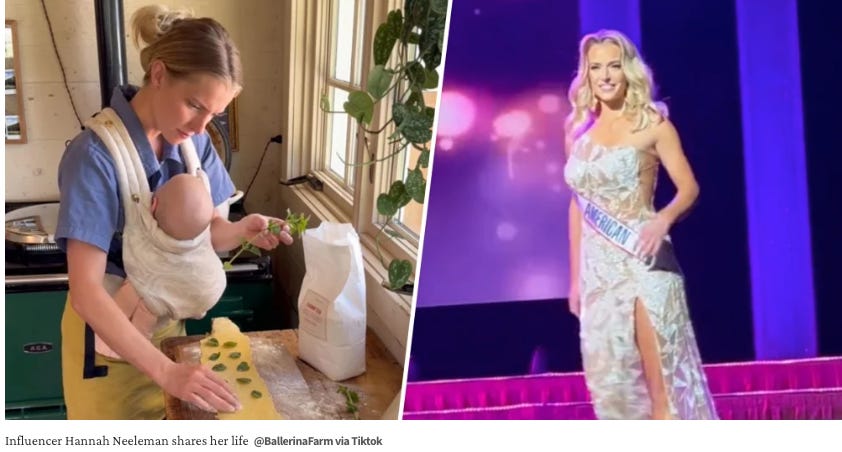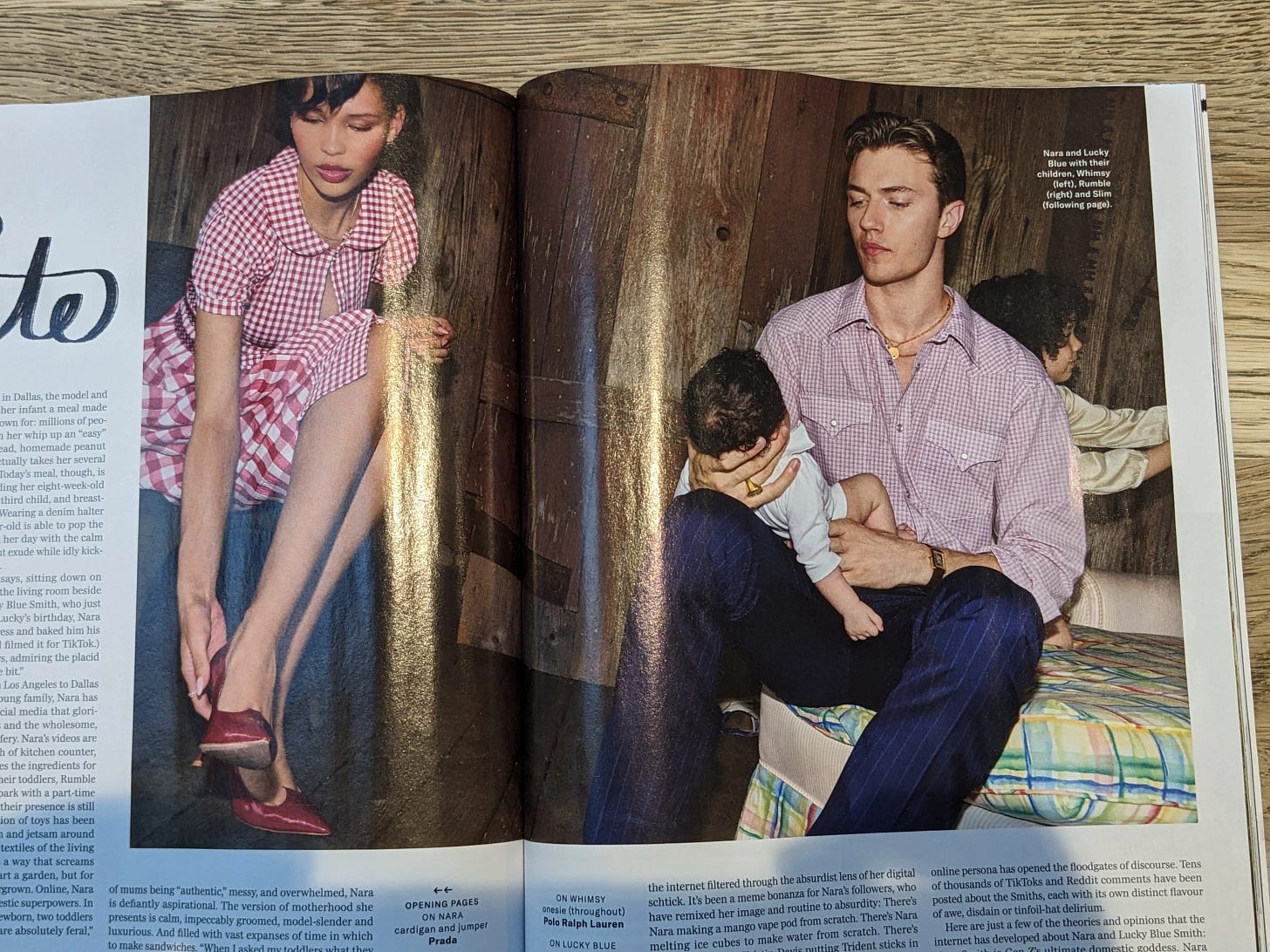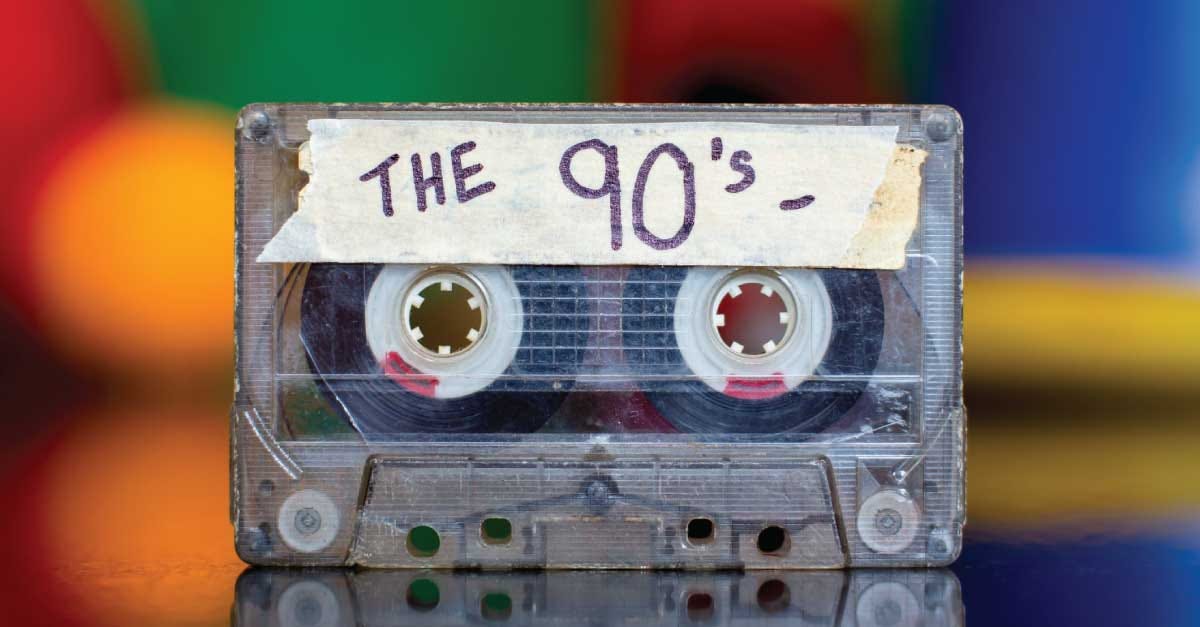There's a shift happening, and I'm not sure how many people are noticing it.
Conservatism.
From "trad wives" taking over our social media timelines last year to the resurgence of historical fashion trends like the milkmaid dress, politics is influencing marketing, fashion, and celebrity culture like never before.
The hashtag #TradWife had 44.5 million posts on TikTok in April 2024.
#FeminineWoman had 5.1 billion views by March 2024.
You’ve probably noticed it too, Kylie Jenner’s dissolving her fillers and the whole “polished but effortless” look is everywhere.
At first glance, it feels like just another beauty trend.
But in January 2025, The Times published an article titled "Republican style is back: bare legs, short skirts, blondes, heels.” In other words, we’re seeing a clear return to traditional feminine aesthetics, and it’s being linked directly to conservative values.
Meanwhile, the looks that once dominated pop culture, bold eyeliner, brightly coloured hair, visible tattoos, are being read as more progressive or feminist.
The thing to remember is that beauty has always been political. What’s different now is how quickly these shifts are happening, and how hyper-visible they are in the age of TikTok, Instagram, and algorithm-driven identity signaling.
For marketers, that’s a massive deal.
Remember in my first newsletter when I talked about the importance of paying attention to what no one else is really saying out loud?
Celebs and influencers won’t always tell you why they’re changing, why they’re dissolving fillers, going natural, or leaning into a more “clean girl” aesthetic. But as strategists, it’s our job to notice the shift, interpret the signals, and understand what they could really mean.
Because by the time the trend is obvious, it’s already too late.
The rise of conservatism:
So, what does this cultural shift really mean?
The “trad wife” trend, in particular, created divide amongst women.
Some argued that influencers like Nara Smith and Hannah Neeleman aren’t “true” trad wives, after all, traditional homemakers weren’t landing brand deals with Maybelline and Coca-Cola. Still, Nara’s vintage-inspired content has major reach, and her estimated 2025 net worth is $6 million and Hannah, who posts about her Utah farm and her family of 10, has worked with brands like Ogee skin care.
Others, however, applauded the movement for highlighting a return to family values, a simpler life, and a more domestic role for women. They believe it’s not just about baking bread and ironing shirts; it’s a lifestyle that speaks to a desire for simplicity, comfort, and perhaps a rejection of today’s ‘always-on-the-go’ world.
In an economy where stability seems more elusive, there are some who do want to embrace a lifestyle centred around home and family.
The impact on marketing:
What did brands do when they saw this trend emerging?
They jumped on it, fast.
For example:
Revolve and Anthropologie teamed up with influencers promoting vintage-style dresses, with some even launching dedicated lines based on the “trad wife” aesthetic.
As for the milkmaid dress, it’s become one of the top-selling items in recent seasons, with ASOS and Zara reporting sales spikes.
eBay reported that searches for 'milkmaid dress' had increased by more than 50% back in July 2024.

This wasn’t just a passing trend, it was an embrace of nostalgia, vintage aesthetics, and a return to values that resonate with conservative ideologies.
And this isn’t just about fashion or beauty. The “nostalgic shift” is influencing every corner of the market: beauty, home goods, even lifestyle products.
Why? People are drawn to the comfort and familiarity of the past, to a simpler time.
And in marketing, nostalgia is goldmine and plays a huge role in consumer attraction.
A study by Mintel found that 76% of UK consumers are drawn to sweets that remind them of their childhood, driving purchasing decisions
Data also suggests that nostalgia-driven campaigns can potentially increase revenue by 3-5% per campaign cycle.
In other words, nostalgia sells.
But what about the brands that don’t tap into nostalgia?
Well, before we get into that, it’s important to say this: just like controversial marketing isn’t for every brand, nostalgia isn’t either. Some brands are built for the future, and the future alone. Their whole identity is about innovation, disruption, and pushing boundaries.
So, the answer to the question is yes, they can risk feeling out of sync with the emotional undercurrent driving a lot of consumer behaviour right now, especially when people are craving comfort, familiarity, and simplicity (more on that below). But that doesn’t mean they’re doomed. It just means they need to double down on their story.
If you’re not leaning into the past, then lean harder into what’s next. Bold design, future-forward values, unapologetic vision. Consumers still love that, they just need to feel something.
Because whether it’s nostalgia or futurism, the brands winning right now are the ones that tap into emotion.
I digress.
What’s pushing this conservatism forward?
What’s fuelling the rise in conservative trends?
It’s partly political and societal changes, of course, but it’s also a result of people searching for meaning, stability, and a sense of belonging in uncertain times.
Recent trends indicate that young women are outpacing men in terms of employment rates.
Data from the Financial Times reveals that young women's employment rate is now higher than men’s in countries like the UK, US, Australia, and Canada.
For example, in the UK, 65.1% of young women are employed compared to 64.5% of young men.
These shifts have led to more economic independence among women, and with that, comes a new sense of empowerment.
But young women are also significantly more likely to be caring for family members…
According to the data, 5.5% of women are looking after their families compared to just 1.7% of men.
This balance between career, family, and education is fuelling the desire of a "soft life", a trend where women are increasingly choosing to prioritise a lifestyle that promotes comfort, self-care, and traditional values without compromising their economic independence.
It could also add context as to why the tradwives trends is increasingly popular.
Are women tired of doing it all? Probably.
So, what should you do?
Start paying attention, not just to what’s trending, but why it’s trending.
This isn’t just a passing “aesthetic.” The rise of conservatism in beauty, fashion, and lifestyle speaks to something deeper: a collective yearning for structure, meaning, and a sense of control in an unpredictable world.
Whether that shows up as “trad wife” TikToks, '‘clean girl makeup;, or buns, it’s all connected.
For marketers, this means it’s time to listen harder, look closer, and get smarter about emotional cues.
Consumers aren’t just buying into products, they’re buying into ideologies, identities, and imagined futures.
So whether your brand leans into nostalgia, champions progressivism, or sits somewhere in between, make sure you’re not just reacting to trends, but interpreting them.
Because in 2025, relevance isn’t about being trendy, it’s about being tuned in.









This hits, but there’s more to unpack.
The "trad wife" aesthetic isn’t just about nostalgia—it’s about curated nostalgia. It’s not the messy, unfiltered reality of homemaking. It’s a romanticized, aspirational version that’s polished for the algorithm. Brands aren’t just selling a lifestyle. They’re selling an escape from the chaos of modern life, packaged as slow living and vintage charm.
For Gen Z, it’s less about political alignment and more about the vibe shift—a craving for softness and stability when the world feels too loud. But here’s the twist: this aesthetic is still being monetized through ultra-modern platforms. Brands jumping on the “simple life” wave aren’t selling homemade bread—they’re pushing $300 prairie dresses and organic skincare.
The play? Tap into the emotional undercurrent, but don’t just copy-paste the aesthetic. There’s room for brands to speak to this desire for ease while still keeping it real. Because let’s be honest—no one’s hand-churning butter between Zoom calls.
This is a fantastic read, thanks for pulling this all together 💫